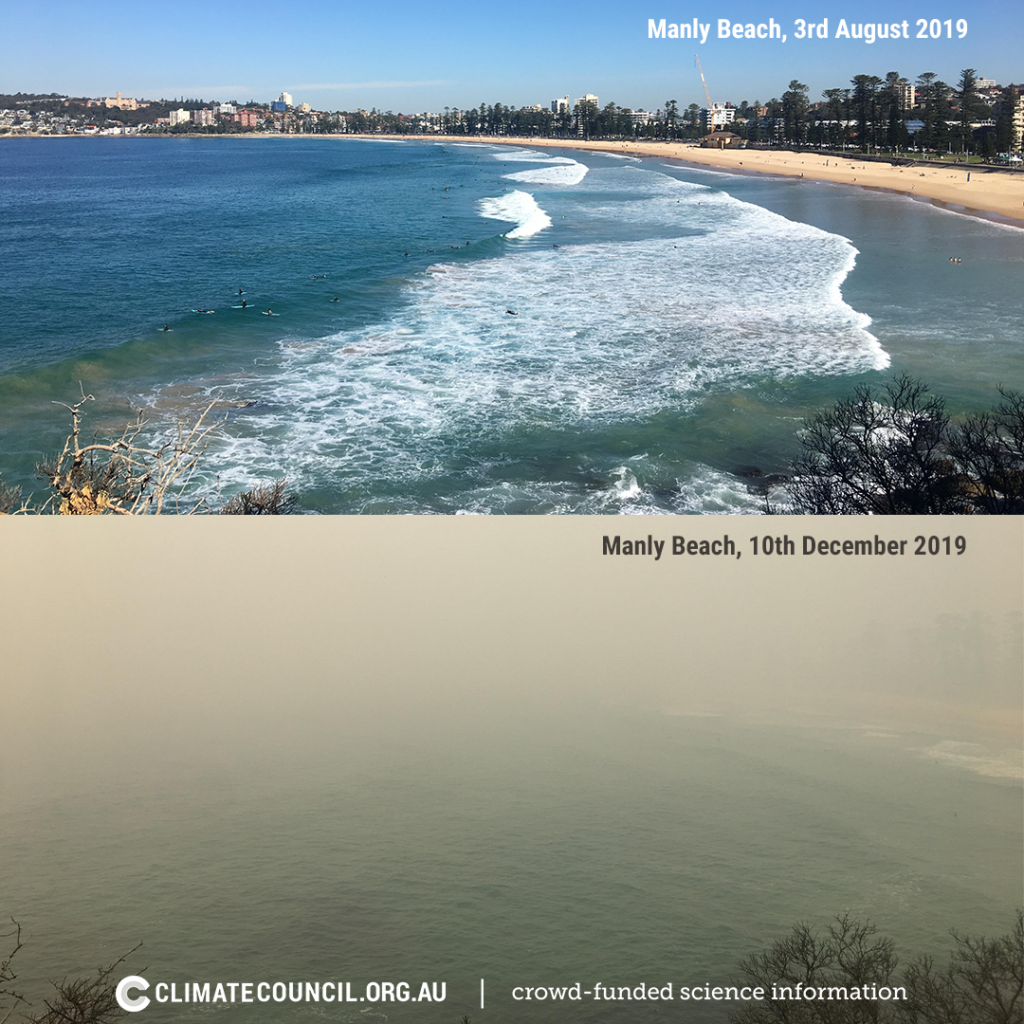This article was written by Dr Kate Charlesworth, and originally published in the Sunday Telegraph.
One year ago today, Sydney had among the highest levels of air pollution in the world – worse than Delhi and Beijing. In the inner west suburb of Rozelle, the air quality index rating was more than 12 times the threshold for ‘hazardous’ air quality (2,552 AQU). By the end of the ‘Black Summer’ about half of the Australian population had been exposed to hazardous levels of smoke pollution for weeks.
I’m a public health doctor living in Sydney, and even I didn’t know what to do: should my kids go school? How could they get any exercise? Should we get an air filter for the house, and if so what type? The truth is that the usual public health advice – stay indoors, don’t exercise outside, have your medications at hand – is designed for air pollution that lasts a few days, not weeks and months. Last summer, we were in uncharted territory. Australia has never experienced air pollution like it. Health departments didn’t really know what to advise nor what the health impacts would be.
We now know some of the health impacts of the bushfire smoke: more than 400 Australian deaths, more than 4,000 hospitalisations and nearly $2billion in healthcare costs. Sadly, these numbers will grow as more research is completed. We know that bushfire smoke contains a range of harmful chemicals and has been likened to tobacco smoke. We know that air pollution, previously thought to impact just heart and lung disease, is now linked with pre-term births, low birth weight babies, poor lung development and asthma in children, diabetes, stroke and some cancers.
Last summer we had smoke infiltrating critical care areas in hospitals and smoke-affected hospital equipment failing. There have also been disturbing reports from obstetricians about ‘black placentas’ from mothers who have never smoked. However, until we have large and long-term studies, we won’t know the full extent of what the ‘Black Summer’ fires cost us.

There is overwhelming scientific evidence – confirmed by the findings of the recent Bushfire Royal Commission – that climate change is driving more extreme weather, including droughts, heatwaves, bushfires and floods. It is clear, then, that Australians are paying a heavy price – with their health – for the failure of governments like ours to act on the climate crisis.
I remember taking my three children to Manly Beach one afternoon in August last year. At this point the fires were already burning, but watching my kids run around on the beach, we felt safe. Then, just a few months later, that same beach was shrouded in smoke, the air quality was hazardous and I was worrying about whether I should let my kids go outside the house to play. It made me realise how exposed we are to climate change here in Australia and how quickly it can change everything.
As one of the hottest and driest continents, Australia is on the frontline of climate change. Australia has already warmed by 1.44° C – significantly more than the global average of 1.1° C. In the health sector we have no national plan to respond to the health impacts of climate change. In Australia’s ‘Long Term National Health Plan’, climate change was not mentioned once. We are completely unprepared for the health service demands of escalating extreme weather and the climate impacts on our workforce, infrastructure and supply chains.
Just as importantly, Australia does not have an appropriate emissions reduction target nor a credible climate policy to minimise further damage. To the contrary, we have a national government spruiking a ‘gas-fired recovery’ when there’s growing evidence that with fugitive emissions, gas can be as polluting as coal. It’s also refusing to set a net-zero emissions target, despite over 80 percent of Australians wanting one.

Sydney Harbour Bridge with smoke haze.
There also seems to be little understanding from the Morrison Government that most climate actions would be hugely beneficial for our health: more jobs (having a job is a determinant of health), cleaner air, healthier diets, cooler and safer cities and more connected communities. My health colleagues overseas are aghast that Australia – which has among the most to lose from the climate crisis, but also the most to gain as a renewable energy superpower– is so regressive in the face of such clear solutions and benefits. In health, as in many other sectors in which international comparisons are being made, Australia is fast becoming an embarrassment.
In all this, there is one clear fact: climate change is harming Australians now, and we’re all at risk. Our COVID-19 response demonstrated that we can act when we need to. Climate change is an immense and growing risk and we must act urgently and decisively to protect ourselves and those we love. This is literally becoming the fight of our lives.